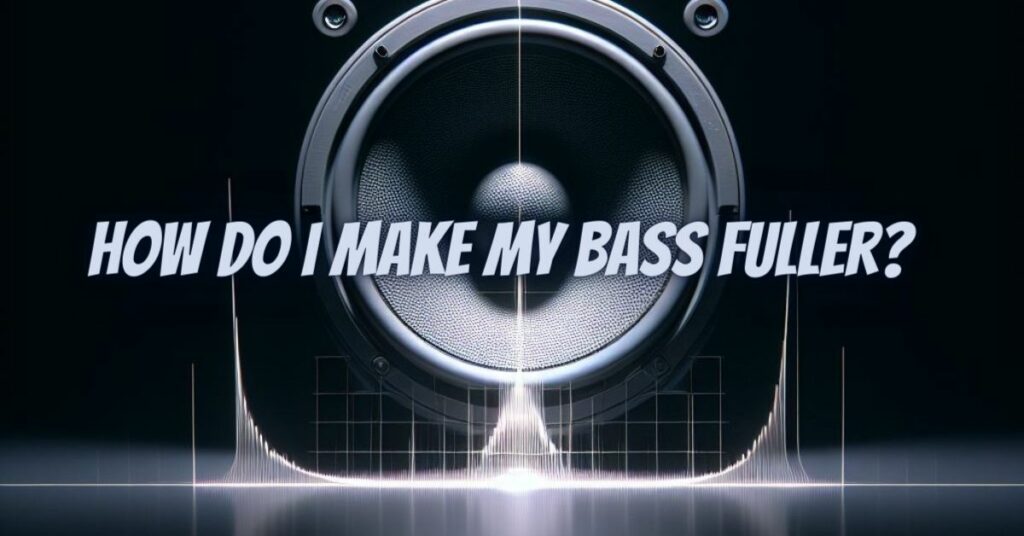There are a few things you can do to make your bass fuller:
- Use a subwoofer. A subwoofer is a speaker that is specifically designed to reproduce low frequencies. Adding a subwoofer to your sound system is a great way to get fuller bass.
- Adjust the equalizer. The equalizer on your sound system can be used to boost or cut different frequency ranges. To make your bass fuller, try boosting the frequencies in the mid-bass range (around 80-200 Hz) and the sub-bass range (below 80 Hz).
- Choose the right headphones or speakers. Not all headphones or speakers are created equal. Some headphones and speakers are better at reproducing low frequencies than others. If you’re looking for headphones or speakers with fuller bass, do some research to find a pair that is well-suited to your needs.
Here are some additional tips for making your bass fuller:
- Layer your basslines. One way to get fuller bass is to layer your basslines. This means playing different basslines on top of each other. You can layer different basslines with different frequencies, different waveforms, or even different instruments.
- Use compression. Compression is a dynamic processing effect that can be used to make your bass sound fuller. Compression reduces the dynamic range of a sound, which means that the quiet parts are made louder and the loud parts are made quieter. This can help to make your bass sound more consistent and present in the mix.
- Use distortion. Distortion is another dynamic processing effect that can be used to make your bass sound fuller. Distortion adds a bit of grit and growl to a sound, which can help it to cut through the mix and sound more impactful.
Here are some specific examples of how to use these techniques to make your bass fuller:
- Layering basslines: You could layer a sine wave bassline with a square wave bassline to get a fuller sound. Or, you could layer a bass guitar bassline with a synth bassline.
- Using compression: You could compress your bassline with a ratio of 4:1 and a threshold of -12 dB. This would reduce the dynamic range of the bassline by 12 dB, making the quiet parts louder and the loud parts quieter. This would make the bassline sound more consistent and present in the mix.
- Using distortion: You could add a small amount of distortion to your bassline with a distortion pedal or plugin. This would add a bit of grit and growl to the bassline, helping it to cut through the mix and sound more impactful.
By using these techniques, you can make your bass fuller and more powerful. Just be careful not to overdo it, as too much bass can make your mix sound muddy. Experiment with different settings and find what sounds best to you.
Here are some additional tips for getting fuller bass in live music:
- Use a bass amp with a large speaker. A larger speaker will be able to reproduce lower frequencies, resulting in fuller bass.
- EQ your bass amp to boost the low frequencies. You can also use a graphic equalizer to boost specific frequency bands.
- Use a compressor to even out the dynamics of your bass signal. This will help your bass sound more consistent and present in the mix.
- Experiment with different pickup positions and playing techniques. Different pickup positions and playing techniques will produce different bass tones.
With a little experimentation, you can find the perfect way to get fuller bass in your live music performances.


